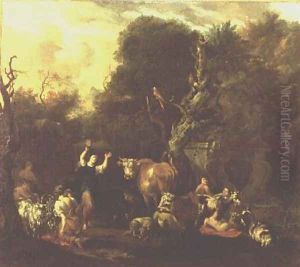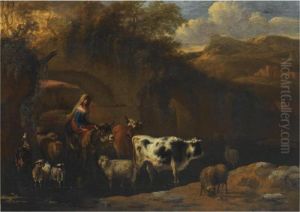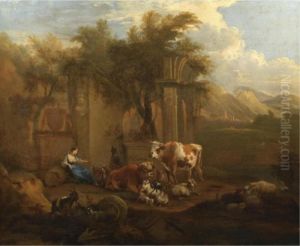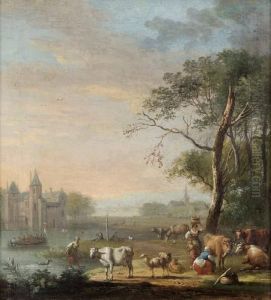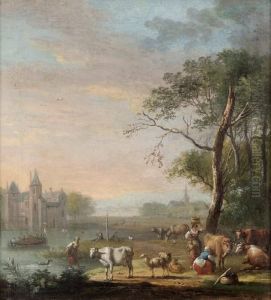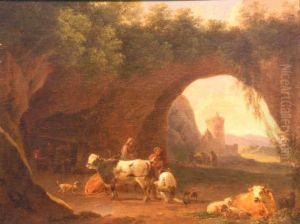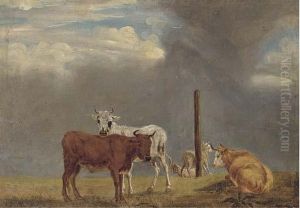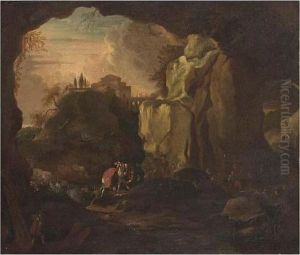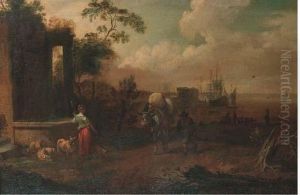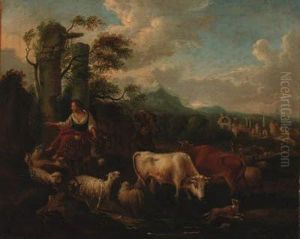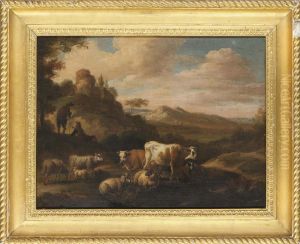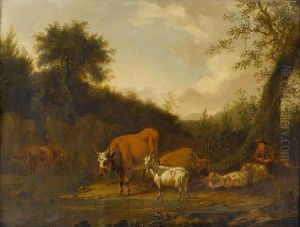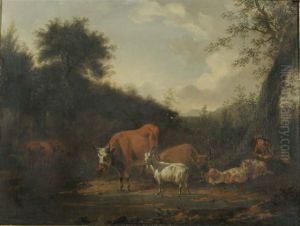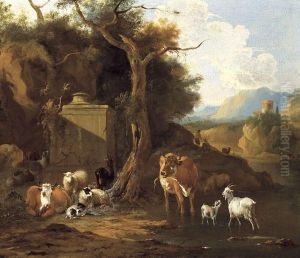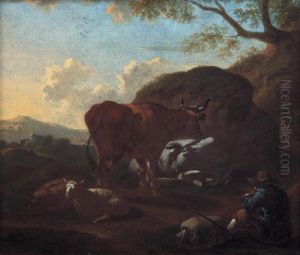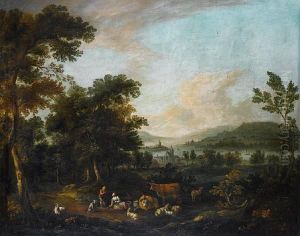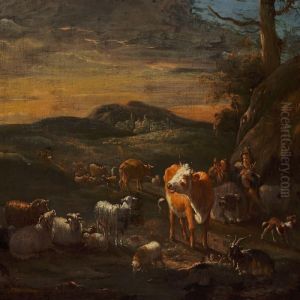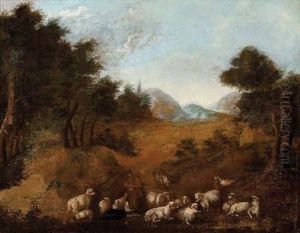Michiel Carre Paintings
Michiel Carre, also known as Michiel Carrée or Michiel de la Carrière, was a Dutch painter and etcher from the Dutch Golden Age. Born in 1657 in The Hague, Netherlands, his artistic journey began under the tutelage of his father, a lesser-known artist, before he continued his studies under the guidance of recognized painters such as Abraham van Beijeren.
Carre's work is often associated with the Baroque style which was prevalent during the 17th century. He is particularly known for his landscape paintings, which display a keen eye for detail and a profound appreciation for the Dutch countryside. His landscapes often depict serene scenes of rivers, villages, and the daily life of the peasantry, imbued with a sense of realism that was characteristic of Dutch Golden Age painting.
Apart from landscapes, Carre also explored other subjects such as genre scenes, portraits, and historical paintings. His versatility as an artist is evident in the various subjects he mastered, although it is his landscapes that have garnered the most attention and acclaim over time.
Michiel Carre's life spanned a period of great artistic innovation and cultural richness in the Netherlands. Although not as famous as some of his contemporaries like Rembrandt or Vermeer, he contributed significantly to the body of Dutch Golden Age art. His works are preserved in various museums and collections, where they continue to be appreciated for their contribution to the Dutch artistic heritage.
Carre passed away in 1727, leaving behind a legacy that, while not as widely recognized as that of some of his contemporaries, reflects the vibrancy and skill of Dutch artists during one of the most flourishing periods of art in the Netherlands.

